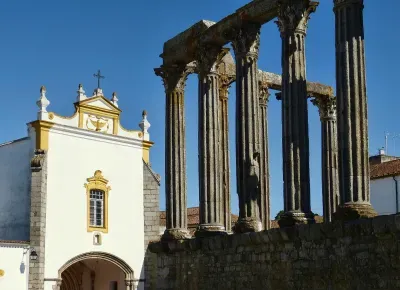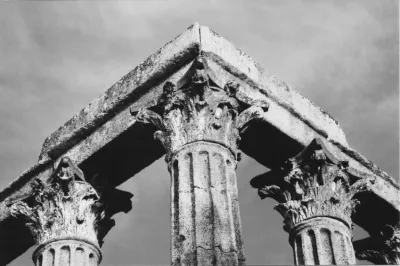
Evora Roman Temple detail Trapuzarra
Temple of Diana - Evora Falco
Evora Roman Temple chiaravi
The Imperial Temple in Evora Templo de Diana
The Roman Temple of Évora is said by some to be the best-preserved Roman structure on the Iberian Peninsula. It was once thought to be the Temple of Diana, the goddess of hunting, and many still call it by this name, but this attribution appears to date back to the views of a 17th century priest, without any historical or archaeological foundation. Most now agree that the temple was built around the first century A.D. and was dedicated to the Emperor Augustus, who was venerated as a god both during his lifetime and after his death.
This structure is well worth taking a look at if you're in the area. It is accessed from one of Evora's main squares, the Largo Conde de Vila Flor, close to the Cathedral and visitors can wander around the outside of the structure. There is no entrance fee and there are no guides or other concessions to tourism. It's simply there to see and admire. For obvious reasons it is not possible to walk amongst the historic remains themselves, but there are plenty of opportunities to take a photo close-up to this elegant structure. Most visits are quite brief.
The granite and marble temple is rectangular in shape, with a podium made of granite slabs, surrounded on three sides by thirteen Corinthian columns, linked by connecting architraves. The original temple was significantly destroyed by Barbarian raiders in the 5th century, but from that time, what remained has been preserved by being incorporated into other buildings. It was once part of the Castle of Evora and was for many years part of a butcher's shop.
Address
Largo do Conde de Vila FlorEvora7000-863Phone
+351 266 769 450Attraction type

Evora travel guide »
Even from a distance the majestic importance of Evora is apparent, its cathedral dominating the view of the famous white and yellow city as it stands atop a hill surrounded by the vast expanses of the Alentejan plain in southeast Portugal. With over two thousand years of history and, therefore, a variety of cultural and architectural influences, Evora is a real national treasure and certainly…